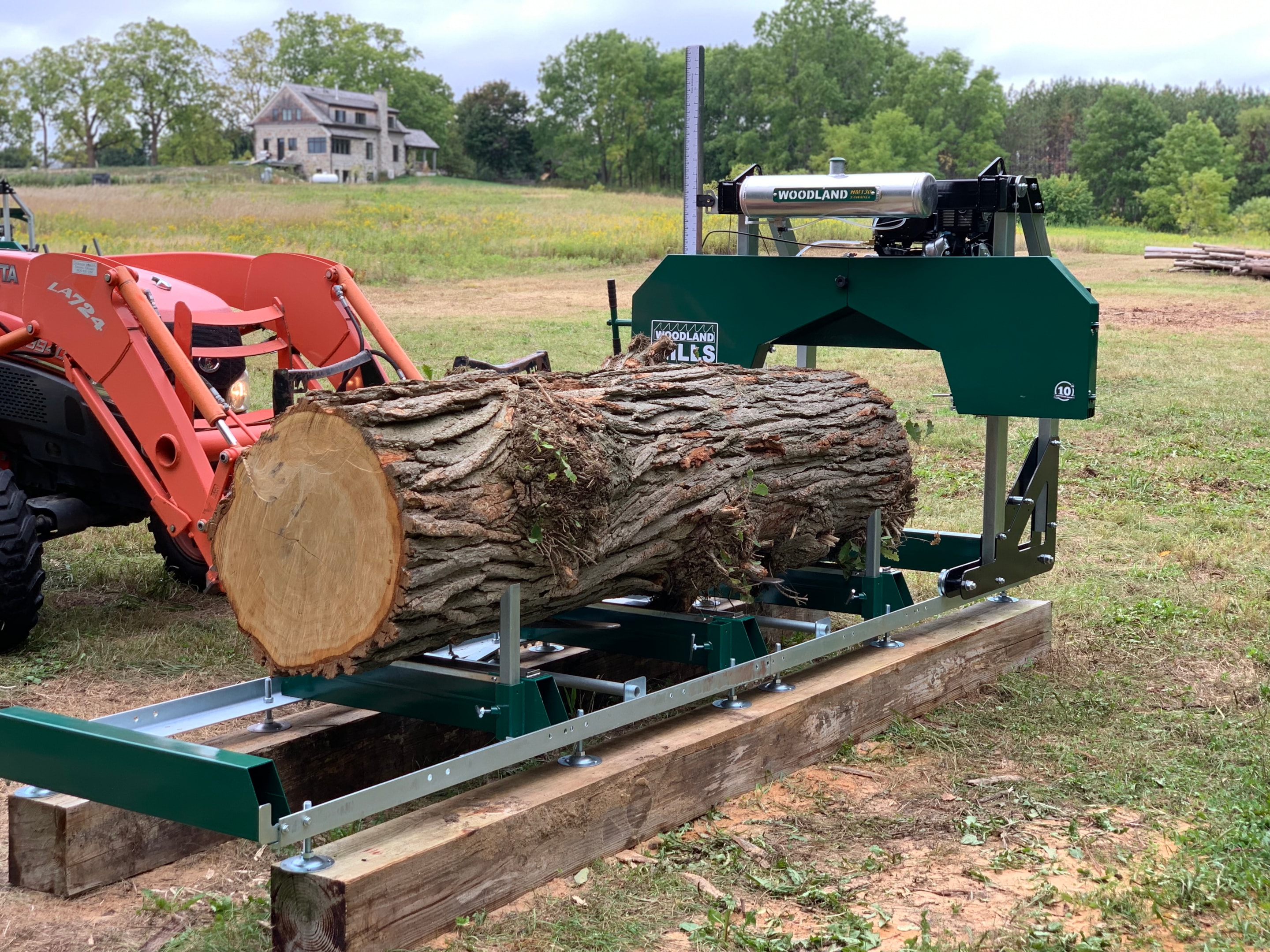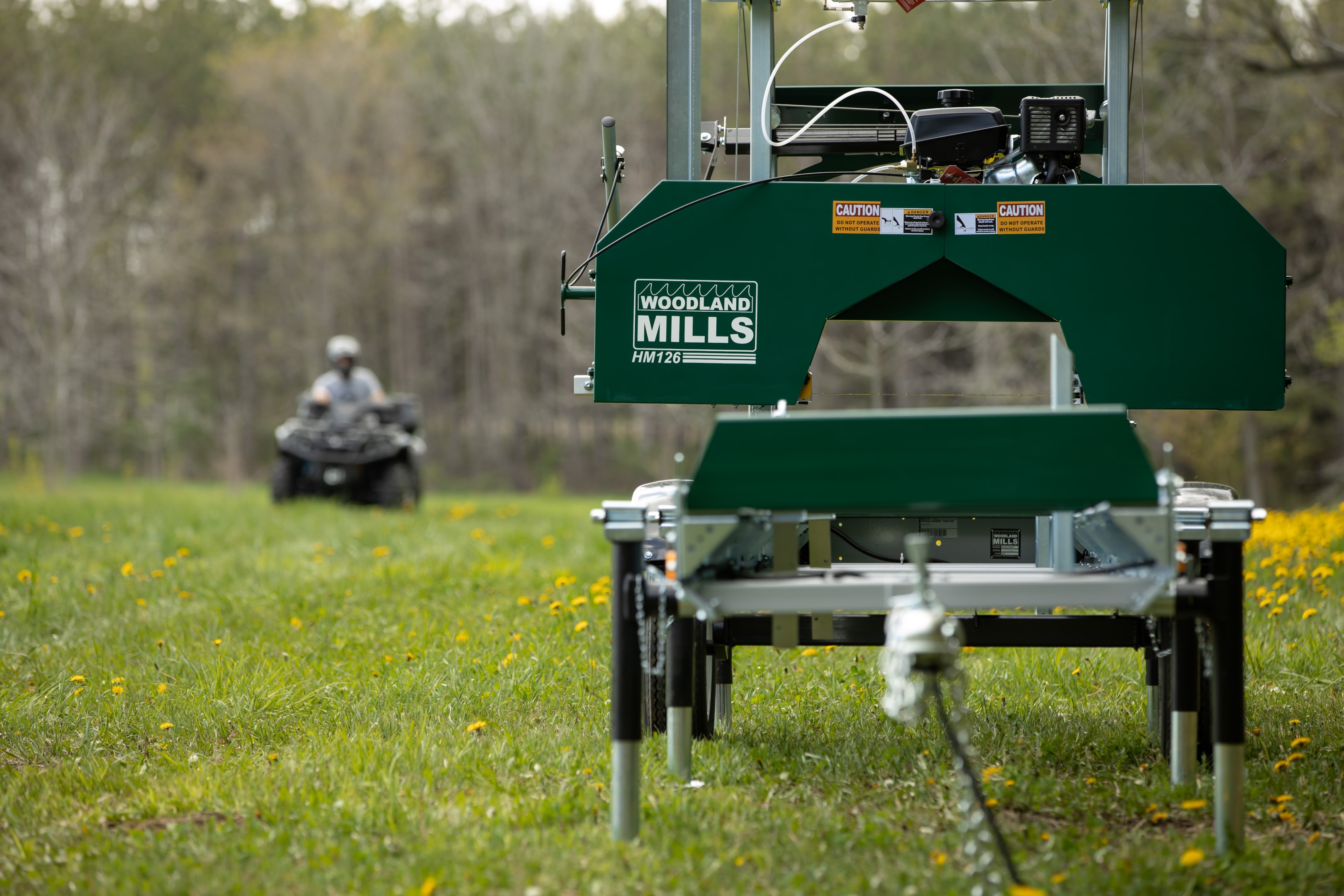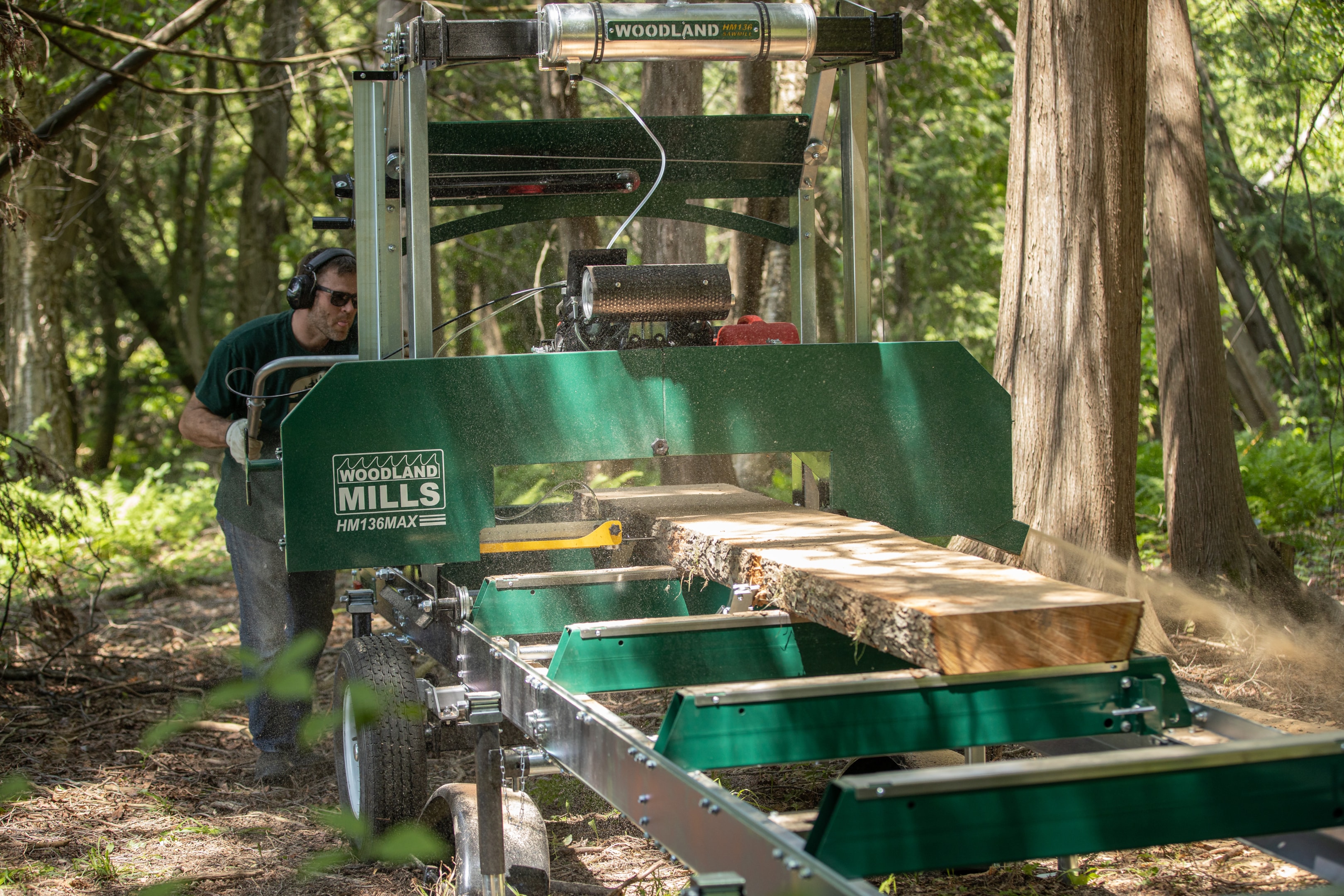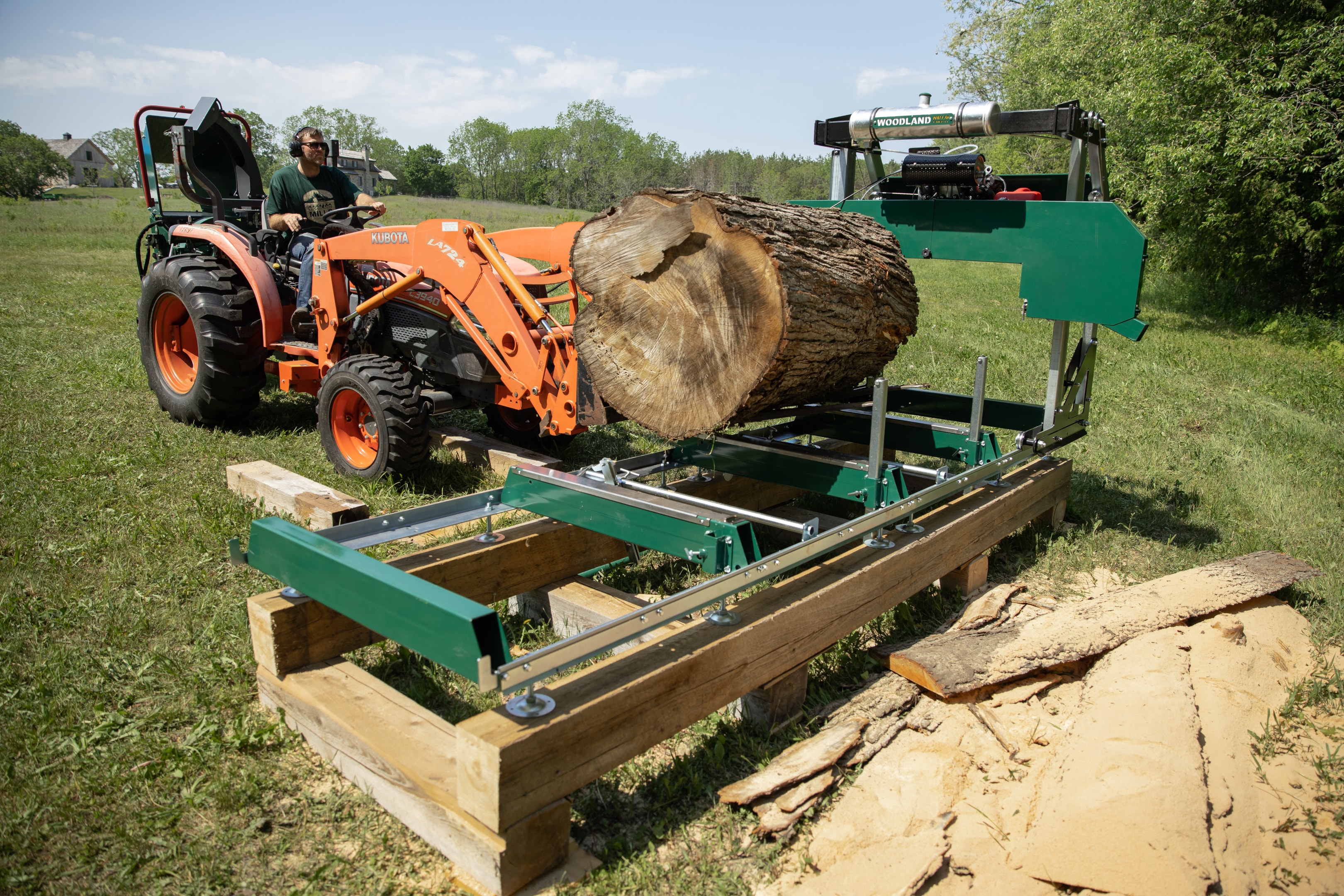Ground Mount vs Trailer Mounted Sawmills
Should you do a trailer mounted sawmill for portability or do a static ground mount? We go over the benefits of both
Whether or not you want to put your Woodland Mills portable sawmill on a trailer or have it ground mounted is an important question every soon-to-be sawyer asks themselves before they purchase.
It's important to know the benefits of doing a trailer mounted mill as opposed to keeping it on the ground. Let's go over the advantages of both and see which is right for you.
Ground Mounted Sawmills
A "ground mounted sawmill" refers to when a sawmill is set up on a stationary location, typically on a level area, and is usually placed on supports such as wooden blocks.
Putting your sawmill firmly on the ground has a number of advantages, especially if you're planning on building a sawmill shed or some kind of permanent place for it on your property.
Do you own a woodlot or forested property with lots of trees? In that case, you probably want a permanent setup to mill lumber that's from your land. This setup is preferred by those who plan on milling their own trees from their property, or have plans to haul logs in from outside their property.
In terms of why you'd want to do this, here as some benefits.

Pros
-
-
You can have a sawmill shed or roof over it and don't have to worry about rain or the elements affecting your sawmill
-
A stationary setup on compacted soil means you can consistently expect your mill to be level
- You can set up your mill on wooden blocks or raised tracks, giving you not only a rigid base to work from but it also allows your log supports to travel up and down further
-
You can have all your tools and equipment close by, such as you cant hook or chainsaw
-
Gives you the option to build a log-loading platform to ease log staging and loading onto your sawmill bed
-
Cons
-
-
Having a permanent setup for it makes it harder to move if you want to relocate it or add a trailer later
-
You may need to think about future track extensions before building your sawmill shed or concrete pad
-
Putting your sawmill on the ground is great for those who don't plan on taking their sawmill mobile. If you know it's going to be in the same place every time you can build up the perfect setup, have everything you need close by and set up your log pile so it's easy to move logs onto your track.
Types of Ground Mount Setups
Whether or not you decide to cover your sawmill with a roof is up to you. Some sawyers will build a lean-to shed or some kind of structure around their mills, while others just use their Woodland Mills sawmill covers, which are great for keeping your mill protected from weather.
But there are lots of different types of ground setups for where you want to place your mill. Some popular choices include:
-
-
Concrete Pad: Many sawyers will pour a concrete slab to mount their track. This is a great option because of its permanence, and if you pour it flat and level then you know it'll make levelling your mill even easier.
-
Wood Cants: Another popular option is to create a wooden frame to mount your tracks on. By setting up two wood cants that run the length of your sawmill track, you can create a level frame to rest your mill on top. The benefit of this is that you can always extend the length of your track later.
-
Steel Tracks: Less popular, but another notable method of mounting your sawmill is on steel tracks. Commonly sourced from recycled railway tracks or steel I-beams, this sturdy mounting method ensures your track will stay flat over time.
-
Trailer Mounted Sawmills
A trailer-mounted sawmill, also known as a mobile sawmill, refers to a sawmill that's paired with a trailer. This allows for easy mobility so it can be towed by a vehicle and moved anywhere.
This setup is preferred by sawyers who want to move their mill to their logs, as opposed to sawyers who want to bring their logs to their mill. It's also great for people who own vast acreage or multiple properties, and need to be able to take their equipment wherever it's needed.
Because the trailer creates a rigid base for your sawmill, you can expect clean, level and consistent cuts wherever you are milling.
Having the option to take your sawmill anywhere you want opens up a world of opportunities. There are lots of advantages to having your mill mobile:

Pros
-
-
Can mill anywhere you want, taking your sawmill to the trees as opposed to taking the trees to your mill
- Can be easily moved in and out of a storage location on your property
- The trailer adds more hight to the mill, creating a nice elevated working height, with easy access to log clamps, log supports and easy repositioning of your logs
-
Can quickly hitch your trailer and get to the job site, milling quickly without needing to haul logs back home
-
Cons
-
-
You will have to re-level your mill each time you relocate it
-
You need to think about how to load logs nto your heightened sawmill bed with the trailer, such as with the optional ramp and winch kit
-
If you want the ultimate level of portability, to mill logs wherever they may be, then this may be the right setup for you.
This will really benefit sawyers who:
-
-
Sell slabs or lumber, since you can mill trees and move slabs without needing to haul logs back to your property
-
Run portable milling services as sawyers for hire, turning customers trees into boards and slabs for them
-
Have large acreage and need to be able to mill logs at any spot on their land without hauling them back to a sawmill shed
-

Your decision
Ultimately it's your choice as to whether or not you want to ground mount or trailer mount your sawmill. Something to remember though is that, like most accessories, you can always get a trailer later, but this will mean disassembling your sawmill track, removing the head and reassembling it on the track.
For a lot of people it's just easier to get the trailer to start with, but this will be up to you.
Regardless, you've got yourself a great machine for milling lumber wherever you need it, whether you want to take it on the go or set up a permanent installation on your property.
Check out the Woodland Mills Product Owners and Community Facebook Group to see other peoples' setups and get inspiration on what your ideal setup could look like.
SHOP SAWMILLS
HM122
An entry-level sawmill packed with impressive features at a budget-friendly price. Designed for hobby sawyers or woodworkers looking for an economical solution to mill lumber.
HM126
One of the best-valued sawmills in the industry. A longstanding favourite that ensures smooth, accurate cuts. Perfect for hobby sawyers, entrepreneurs or seasoned woodworkers.
HM130MAX®
A wide capacity sawmill that produces stunning high-value live-edge boards. Loaded with features including our FULLCUT™ sawhead, RapidChange® blade system, auto lube, and more.
HM136MAX™
The ultimate solution for cutting wide live edge slabs, perfect for tabletops, counters, benches, and more. Our unique FULLCUT™ sawhead design ensures your logs' widest assets are left intact.
Join the Woodland Mills Community Facebook group. Search advice and insights from over 65,000 knowledgeable, supportive members.
- Pre-purchase considerations
- Sawmill set-up support
- Project inspiration photos and videos
- Community troubleshooting support

